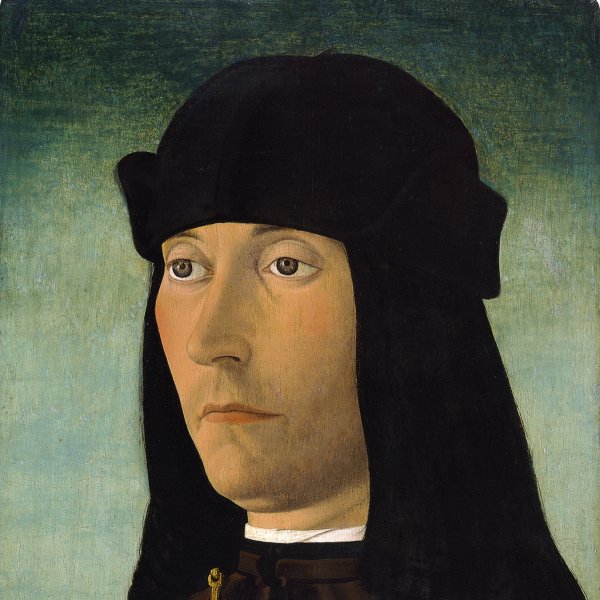Filippo Mazzola
Parma, ca. 1460 -1505
Filippo Mazzola belonged to a family of painters that probably originated in Pontremoli but moved to Parma in 1305. He probably trained with Francesco Tacconi in his Cremona studio and travelled to Venice on a number of occasions. Mazzola’s style reveals the influence of Venetian painting, particularly Bellini and some aspects of Alvise Vivarini. His portraits clearly reflect a knowledge of Antonello da Messina.
Mazzola’s first documented work is The Virgin enthroned with Saints (Galleria Nazionale di Parma), signed and dated 1491. Among his signed religious compositions are the Baptism of Christ of 1493 (Parma cathedral); a Virgin of 1495 (private collection, Italy); The Resurrection of 1497 (Musée des Beaux-Arts, Strasbourg); a polyptych of 1499 (Museo Civico, Piacenza); The Pietà of 1500 (Museo di Capodimonte, Naples); The Virgin enthroned with Saint Cecilia and Saint Clare of 1502 (Gemäldegalerie, Berlin); and The Conversion of Saint Paul of 1504 (Galleria Nazionale di Parma). Mazzola was also a fine portraitist, for example Portrait of a Man (Pinacoteca di Brera, Milan) and Bust of a Man (Low Art Museum, Coral Gables, Florida). His importance as an artist was overshadowed by that of his son Girolamo Francesco Maria Mazzola, known as Parmigianino.
Mazzola’s first documented work is The Virgin enthroned with Saints (Galleria Nazionale di Parma), signed and dated 1491. Among his signed religious compositions are the Baptism of Christ of 1493 (Parma cathedral); a Virgin of 1495 (private collection, Italy); The Resurrection of 1497 (Musée des Beaux-Arts, Strasbourg); a polyptych of 1499 (Museo Civico, Piacenza); The Pietà of 1500 (Museo di Capodimonte, Naples); The Virgin enthroned with Saint Cecilia and Saint Clare of 1502 (Gemäldegalerie, Berlin); and The Conversion of Saint Paul of 1504 (Galleria Nazionale di Parma). Mazzola was also a fine portraitist, for example Portrait of a Man (Pinacoteca di Brera, Milan) and Bust of a Man (Low Art Museum, Coral Gables, Florida). His importance as an artist was overshadowed by that of his son Girolamo Francesco Maria Mazzola, known as Parmigianino.





